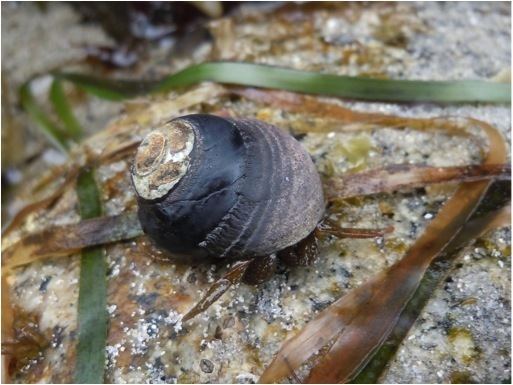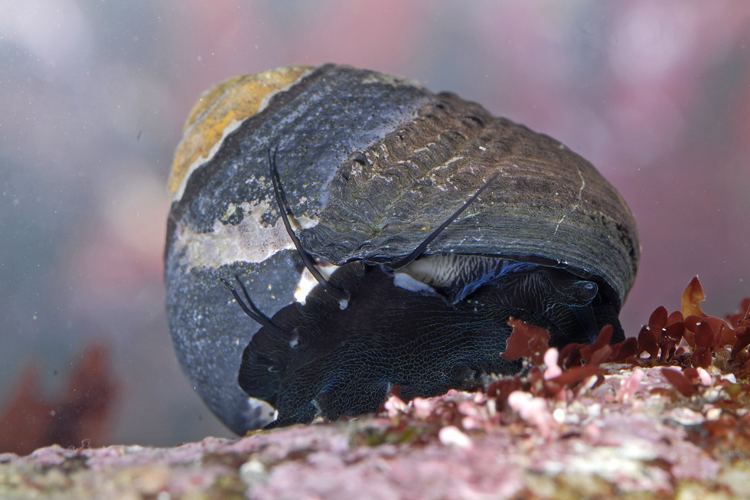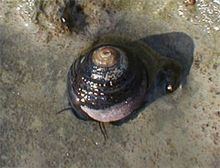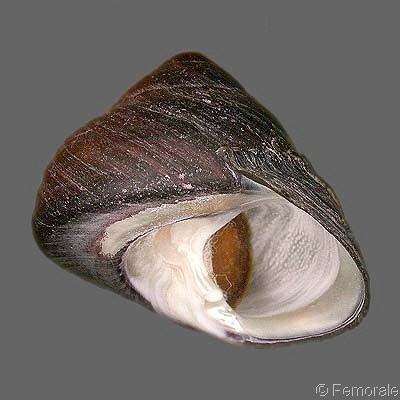Rank Species | Superfamily Trochoidea Genus Tegula (gastropod) Higher classification Tegula | |
 | ||
Similar Tegula, Gastropods, Molluscs, Tegula brunnea, Lottia | ||
Black turban snail tegula funebralis
The black turban snail or black tegula, scientific name Tegula funebralis, is a species of medium-sized sea snail with gills and an operculum, a marine gastropod mollusc in the family Tegulidae.
Contents
- Black turban snail tegula funebralis
- Distribution
- Description
- Habitat
- Life habits
- Predators
- Human use
- References

This Eastern Pacific Ocean species was previously known as Chlorostoma funebralis.
Distribution
The species is found off the Pacific coast of North America from Vancouver Island to the central part of the Baja California peninsula in Mexico. It is of the most abundant mollusks of the Mexican coast
Description

Most adult individuals of this species have shells which are 20 to 50 mm (or about an inch, to an inch and three quarters) in diameter.

This species is similar to Tegula gallina in form and characters of the aperture. It is lusterless, purple or black. The apex is usually eroded, and orange-colored. The teeth of the columella are white, and there is never a yellowish streak at the base. The whorls are spirally lirate, sometimes smooth except on the base, sometimes strongly lirate above. The suture is margined below by an impressed line, and by elevated, foliaceous incremental lamellae. This last feature may almost always be detected, although sometimes but very slightly developed. The foliated subsutural margin is characteristic, also, though not always developed.
Empty shells of this species are very often used by hermit crabs, especially Pagurus samuelis.
In 1971, a new sense organ was discovered in this marine snail. Chemoreceptor organs were found near the base on the border of the leaflets of the ctenidium (comb-like respiratory gills), one on each leaflet. They form a light swelling near the base of the leaflet with a pocket lying within the swelling. Together they are termed a "bursicle".
Habitat
The species is found in the rocky intertidal zone, where these snails graze on algae, microscopic films, and wrack. Small juveniles are found mostly under rocks and among coarse sands.
Life habits
Tegula funebralis is sexually dimorphic, not hermaphroditic. These snails may live as long as twenty or thirty years.
When fleeing a predator on a sloping substrate, the snail may simply detach itself and thus it will roll or drop away.
Predators
Predators of Tegula funebralis include sea otters, and predatory starfish such as Pisaster ochraceous.
Human use
The black turban snail was harvested in the Early Period by the Native American peoples.
